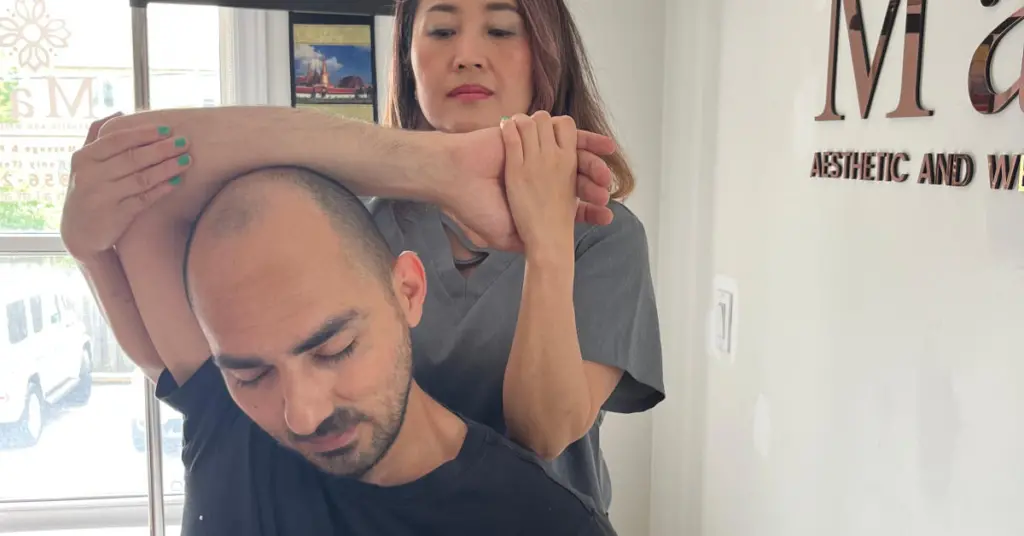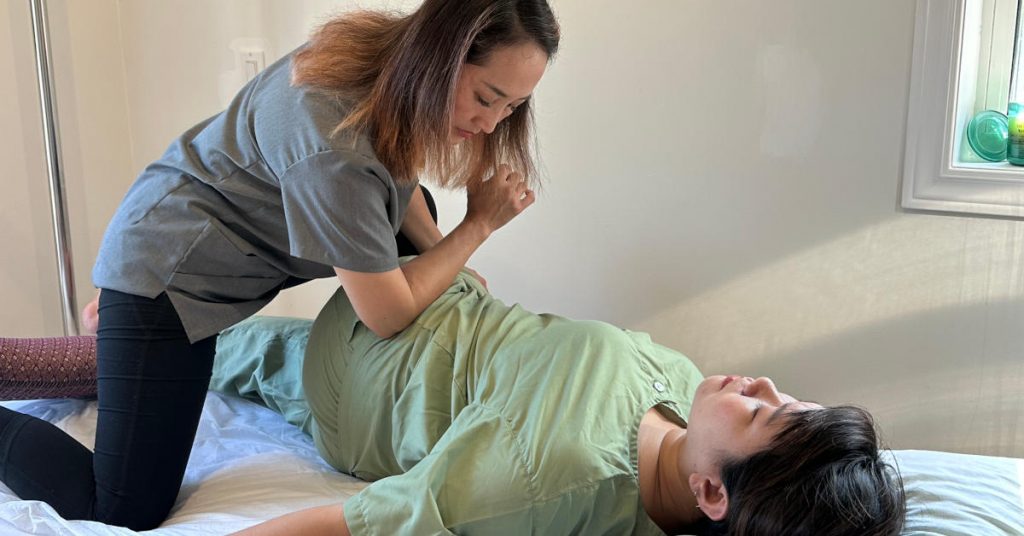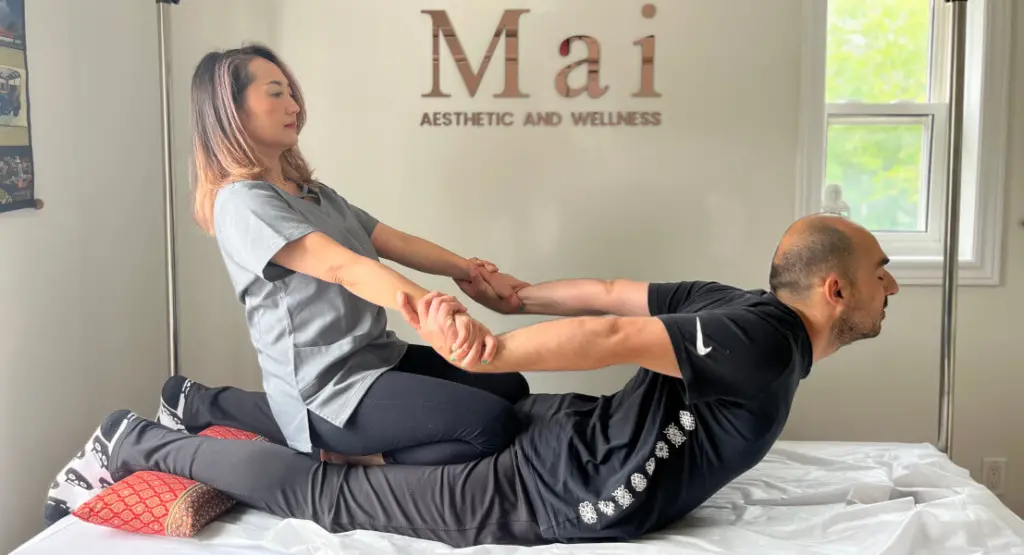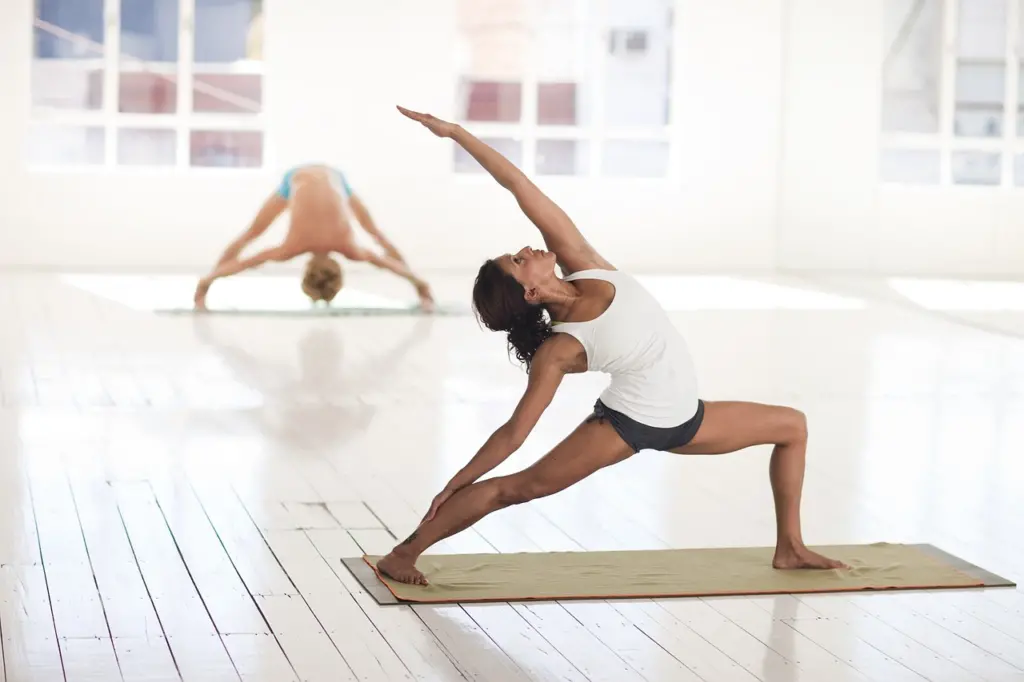- How Does Thai Massage Improve Flexibility and Mobility?
- Muscle Groups Targeted to Regain Flexibility
- Thai Massage Techniques Used to Improve Flexibility
- Why Flexibility and Mobility Commonly Decline Over Time
- Benefits of Restored Flexibility and Mobility
- Additional Lifestyle Tips for Maintaining Flexibility Gains
- Conclusion
Thai massage is an ancient bodywork therapy that originated in Thailand over 2,500 years ago. Also influenced by ancient Indian Ayurvedic techniques, Thai massage applies gentle pressure and stretching techniques to the body’s various muscle groups and joints.
For those suffering from chronically tight, stiff muscles or restricted joint mobility, Thai massage offers an effective, drug-free way to regain flexibility and ease of movement. This article explores exactly how Thai massage works to provide these highly sought-after benefits.
How Does Thai Massage Improve Flexibility and Mobility?
Thai massage works to improve flexibility and mobility in several key ways:
Stretching and Applying Pressure
The massage therapist will slowly move your body into various yoga-like poses and positions. This provides gentle yet deep stretching to muscles and joints that have shortened and tightened over time due to:
- Disuse
- Injury
- Overuse strain
- Chronic poor posture
For example, those with office jobs may have extremely tight hip flexors and chest muscles from sitting hunched over a computer all day. Their hamstrings and calves have likely shortened as well from lack of use.
Thai massage applies firm, constant pressure into thesechronically tight areas using palms, thumbs, forearms and feet. This pressure incrementallyreleases the built up tension in the muscle fascia (connective tissues) and slowly allows the muscle fibers to elongate.
Adhesions also commonly form between muscle fibers throughout the body where strain and overuse occur. These adhesions bond muscle fibers together abnormally, which restricts flexibility and elasticity. The deep tissue compression techniques used in Thai massage help break down and relieve these adhesions.
Increases Range of Motion
As the therapist systematically stretches tight, shortened muscles and applies compression at just the right angles, the muscle fibers incrementally lengthen. This allows a greater range of motion around the nearby joints.
For example, releasing tightness in the hamstrings and hips allows more flexibility for forward bending, twisting, running, squatting or sitting cross-legged. Mobilizing stiff shoulders increases how far you can reach behind your back.
Releasing chronically contracted muscles restores mobility to all parts of the body – from the neck downward to the feet. Simple everyday movements become less painful, restricted and difficult.
Boosts Circulation
The constant therapeutic pressure Thai massage applies also enhances circulation. Arteries and blood vessels experience increased blood flow thanks to the onslaught of physical pressure, warmth and motion applied by the therapist’s hands and body.
Boosting circulation delivers fresh oxygen and nutrients to nourish joint fluid, muscles, tendons and ligaments – allowing them to regain elasticity and flexibility.
Stimulates the Nervous System
The stretching, compression and mobilization techniques stimulate the central nervous system. This causes endorphins and neurotransmitters to flood through the body to combat inflammation and pain.
This boosted electrical nerve activity combined with expanded blood flow provides revitalizing, rejuvenating effects. The body’s range of motion expands as tissues receive nourishing support.
Muscle Groups Targeted to Regain Flexibility
Thai massage systematically targets all the major muscle groups and joints throughout the body that commonly tighten and shorten over the years. This includes both the upper and lower body:
Upper Body
- Neck – Techniques mobilize the cervical vertebrae and stretch out strained neck muscles contributing to loss of flexibility. This allows you to turn your head more freely with less grinding and pain.
- Shoulders – Mobilization and Thai stretches open up the shoulder joints and stretch muscles of the rotator cuff. Your arms can raise higher overhead with less impingement.
- Chest – For those with slumped desk posture, chest muscles become extremely tight and shortened. Thai massage helps reverse this using compression and passive range of motion stretches – allowing your entire spine and ribs to move more freely.
- Upper Back – Techniques open up the thoracic vertebrae and loosen strained back muscles. Your entire spine gains mobility for easier twisting and lateral bending.

Lower Body
- Quadriceps – Firm pressure and passive knee flexion help relieve chronically contracted “quads” from sitting too much. This restores range of motion for easier bending, squatting and getting up from chairs.
- Hamstrings – Some of the deepest stretches and pressure get applied to notoriously tight hamstrings through Thai massage techniques using bodyweight leverage. This allows much greater flexibility for forward bending tasks.
- Hips – Gentle rotation, compression and mobilization reaches deep into stiff hip joint tissues – helping restore elasticity and mobility for activities requiring hip articulation.
- Inner Thighs – The deepest inner thigh tissues receive firm pressure and gradual stretching. This releases tension for activities requiring wider straddle flexibility like dancing, yoga or cycling.
- Calves – Shortened, tense calf muscles receive mobilization and compression therapy allowing greater ankle flexion for everyday walking and athletic endeavors.

As you can see, common trouble spots all over the body gain flexibility from Thai techniques. By targeting tightened, overused areas this way – whole body mobility improves incrementally over a series of sessions.
Thai Massage Techniques Used to Improve Flexibility
There are several signature Thai massage techniques and modalities therapists utilize in sessions to provide such powerful flexibility and mobility enhancing effects:
Passive Partner Stretching
Also called “passive yoga”, this technique has the client relax in yoga-derived positions as the therapist applies gentle stretches. The therapist adjusts the stretch intensity based on the client’s flexibility that day.
The partner stretching allows many hard-to-access muscles to receive deeper tension release and range of motion expansion than you could achieve stretching yourself. It also avoids the strain of actively stretching tight muscles.
Compression Techniques
Thai massage uses a variety of compression techniques – gradually applying direct pressure to chronically tight areas using palms, thumbs, elbows, knees and feet pressure:
- Trigger Point Compression – Isolated pressure applied to myofascial trigger points to release strain.
- Myofascial Compression – Held pressure to gently break down rigid myofascial adhesions between muscle fibers.
- Muscle Belly Compression – Moregeneral direct pressure along the entire muscle belly to relieve knots.
This compression therapy stimulates deep muscle tissues and allows stiff areas to unwind tension – restoring elasticity.
Passive Range of Motion Exercises
The therapist will gently guide your body through full joint range of motion patterns to help reestablish smooth articulation:
- Spine flexion/extension/rotation
- Knee/hip/ankle flexion/extension
- Shoulder circumduction
Redeveloping full active range of motion requires first retraining passive flexibility in all movement planes. Thai massage helps awaken proprioceptive awareness of your full mobility.
Assisted Stretching with Props
Props like pillows, bolsters, or ropes help support the body in yoga-like poses. This allows deeper stretching with less discomfort to problem areas like the hamstrings or hip rotators. The support helps avoid overstretching tender tissues.
Joint Mobilization Techniques
Gentle cradling, rocking or traction of joints brings fluid and motion back into neglected areas. This is applied to areas like the spine, wrists, hands, ankles or neck.
Releasing trapped tension in and around joints allows connective tissues to glide more smoothly.
Stimulating Pressure Points
Key acupressure points along the body’s meridians receive thumb or elbow pressure. This releases endorphins for pain relief while addressing organ and energy imbalance issues restricting flexibility.
As you can see, Thai massage uses a diverse toolkit of stretching, compression and joint therapy modalities. These systematic techniques soften and hydrate all the body’s stiff, dehydrated tissues. This allows supple freedom of movement to be restored.

Why Flexibility and Mobility Commonly Decline Over Time
There are several key reasons flexibility and mobility tend to decline over the years if not properly maintained:
Injury or Overuse
Past injuries like sprains, fractures or tears often heal with rigid scar tissue formation around the injured site. Ligaments may heal shorter or weaker – restricting future mobility and stability around a joint.
Areas that endure repetitive strain also trigger persistent contraction cycles in nearby muscle tissues to splint and guard vulnerable areas. For instance, runners often have quadriceps, calves and hips in a state of constant tension and shortening.
Over time, excessive tension or scar tissue can build up around joints to increasingly restrict healthy range of motion if proactive rehabilitation is not done.
Poor Posture Habits
Modern lifestyles full of sitting, slouching over phones and computer screens take a major toll. Muscles like the chest, hips flexors and upper back muscles shorten. Meanwhile low back areas over lengthen in poor posture.
Imbalances from asymmetric postures like favoring one leg while standing further exacerbate flexibility decline.
Addressing the root lifestyle factors causing postural dysfunction helps tremendously – along with bodywork like Thai massage to unwind accumulated compensation pattern tension.
Muscle Shortening
When muscles stay perpetually contracted and seldom receive full range of motion stretching, they shorten over time. Sedentary lifestyles leave certain muscles inactive as others become overworked. These muscular imbalances pull bones and joints incrementally out of healthy alignment.
For instance tight hip flexors often cause an exaggerated lower back arch (lordosis) – requiring much deeper hip flexor release to allow the pelvis to return to neutral.
Muscles have far less extensibility when chronically shortened. Thai massage stretches these tissues much more effectively than someone can stretch themselves due to the use of bodyweight leverage and proper technique.
Inactivity & Disuse
Areas of the body people stop using fully – like extreme ankle flexion for runners or shoulder mobility for swimmers – become more rigid if not regularly articulated through full range of motion.
Like any other body tissues – joints, muscles, fascia and ligaments require frequent mobility activity to stay hydrated, nourished and elastic. Thai massage helps ensure full body motion is not neglected or isolated.
Aging Factors
The natural aging process causes collagen thickening and water content reduction in connective tissues over decades. Spinal discs and cartilage pads thin. Fatty lubricants diminish around joints. These aging effects reduce flexibility if preventative health practices are not adopted.
Consistency with Thai massage can help slow and minimize such common age-related decline considerably through stimulating and hydrating body tissues regularly.
Benefits of Restored Flexibility and Mobility
Unwinding years of accumulated tension and restoring free range of motion through Thai massage provides many wide ranging benefits:
Reduced Pain & Discomfort
As compressed nerves receive space again, irritated tendons slide smoothly and stiff joints open – general aches and pains substantially reduce. Your threshold for discomfort goes up as tissues rehydrate.
Enhanced Athletic Performance
Sports like golf, swimming, running and functional fitness rely heavily on coordinated mobility and stability around joints. Restored flexibility allows greater power and efficiency of movement for enhanced performance.
Improved Work Efficiency
Daily tasks like looking over your shoulder to change lanes while driving, twisting to lift objects or even brushing your teeth and hair become less painful and effortful.
Reduced Injury Risk
When pliable muscles actively move joints through full range of motion, it strengthens stability and integrity around areas like the vulnerable shoulder and knee joints.
Spinal Protection
Maintaining youthful spine flexibility allows the vertebrae and discs room to rehydrate daily without excessive grinding or compression forces. Pain sensitivity around spinal joints reduces as nerve impingement eases.
Enhanced Circulation
Fresh nutrient-rich and oxygenated blood can flow easier to nourish tissues as compressed blood vessels open. Nerve sensitivity and irritation alleviates as swelling diminishes.
Emotional Release
Releasing long held tension in the body allows mental and emotional relaxation as well. Anxiety, frustration and depression lift away along with physical discomfort.
Body Awareness
As we regain touch with stiff neglected areas of our body, proprioceptive awareness heightens greatly. We relearn optimal postural alignment patterns and move with enhanced ease.
Graceful Aging
Keeping the body supple and flexible into older age allows us to avoid decline and maintain active, mobile independence far longer with a higher quality of life.
The benefits of maintaining and restoring flexibility through Thai massage go far beyond basic comfort and range of motion. Effects cascade positively into both physical and psychological health.
Additional Lifestyle Tips for Maintaining Flexibility Gains
To maximize and preserve the flexibility gains achieved from regular Thai massage therapy sessions, also consider following these self-care tips:
Perform Gentle Stretches Daily
Take 10 minutes a day to gently move joints through range of motion and stretch any chronically tight areas. This helps repattern neuromuscular holding habits and circulate fluid.
Practice Hot Yoga
The sustained stretching and heat therapy of hot yoga conditions tightened tissues extremely effectively while building core strength and body awareness.
Go For Massage Walks
Take reflective walks between massage sessions visualizing your improved alignment and posture while gently stretching any rediscovered tight spots further.
Apply Heat Packs
Using heat packs before performing stretches intensifies the viscosity and elasticity boost effects for even greater lengthening and pliability gains.
Invest in Ergonomic Equipment
Chairs, keyboards, desks and mattresses all shape structure and flexibility immensely over time. Ensure your equipment properly supports neutral spinal alignment as much as possible. Adjust regularly.
Hydrate Well
Muscles and fascia lose suppleness quickly when dehydrated which causes cramping. Drink plenty of electrolyte-rich fluids before and after Thai massage sessions. Reduce inflammation causing drinks like alcohol and caffeine.
Roll Out Muscle Knots
Using massage balls, foam rollers or percussion massagers on tender areas boosts blood flow while breaking down knotted adhesions.
Strengthen The Core
Cultivating core and postural endurance through Pilates, functional training or yoga helps sustain healthy flexibility gains by retraining motor patterns.
By taking initiative to integrate such self-care approaches, the profound benefits of Thai massage therapy amplify and become truly embodied long term.
Conclusion
Tight, compressed body tissues lose elasticity and mobility gradually over time when strained postures lock in or injury and inflammation take hold. Thai massage offers a highly adaptable way to gently unlock this strain in all areas of the body.
Through assessment of personalized problem zones and holistic treatment, Thai massage restores free range of motion to restricted joints and long-shortened muscles.
By combining unique assisted stretching techniques, compression therapy and range of motion exercises both upper and lower body tissues regain youthful mobility and freedom once again through consistent Thai massage.

